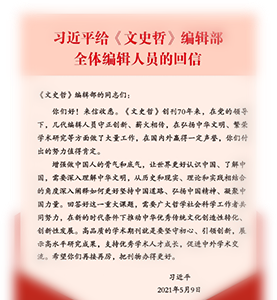儒家哲理的关键问题是:一种源自人心的仁爱情感如何能够成为贯通物我内外的天人之道。当前学界对此问题主要有实体论与情感论两种不同的回答。实体论凸显了仁道的形而上之维,但它在完成仁道形而上学建构的同时,使其脱离了仁者之仁的本意,沦为一种抽象的形而上学实体。情感论回归仁者的原本情感体验,避免了仁道的抽象实体化,同时却陷入了经验主义的困境。感通本体论以感通为视角,揭示仁道如何能够既立足仁者之仁,又能够超出仁者的主观性限制,成为贯通物我内外的枢机。
An Introduction into the Ontology of Sympathization: With a Discussion with Li Zehou and Chen Lai
Cai Xiangyuan
A key question of Confucianism is how an affection originated from heart can become a metaphysical Dao that unites the self and the thing, the inner and the outer. To this question, there are two typical different responses, that is, respectively from the perspective of entity and of feeling. The first answer focuses on the metaphysical dimension of Benevolent Dao. It realizes the metaphysical construction of Benethvolent Dao; however, it makes it to be an abstract entity, therefore deviating from the original meaning of the benevolence of the benevolent. The latter goes back to the feeling of the benevolent and thus avoids the substantiation of Benevolent Dao. However, it falls into the dilemma of empiricism. The ontology of sympathization intends to disclose how the benevolent Dao can be established in the benevolence of the benevolent and while transcends the subjective constraint of the benevolent, thus becoming the pivot uniting the self and the thing, the inner and the outer.


